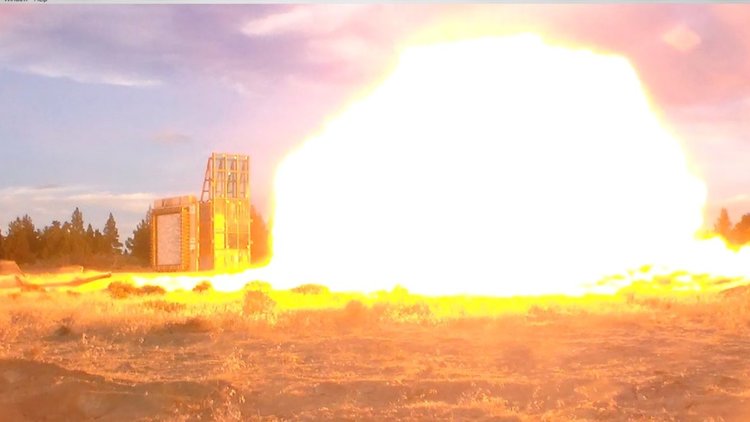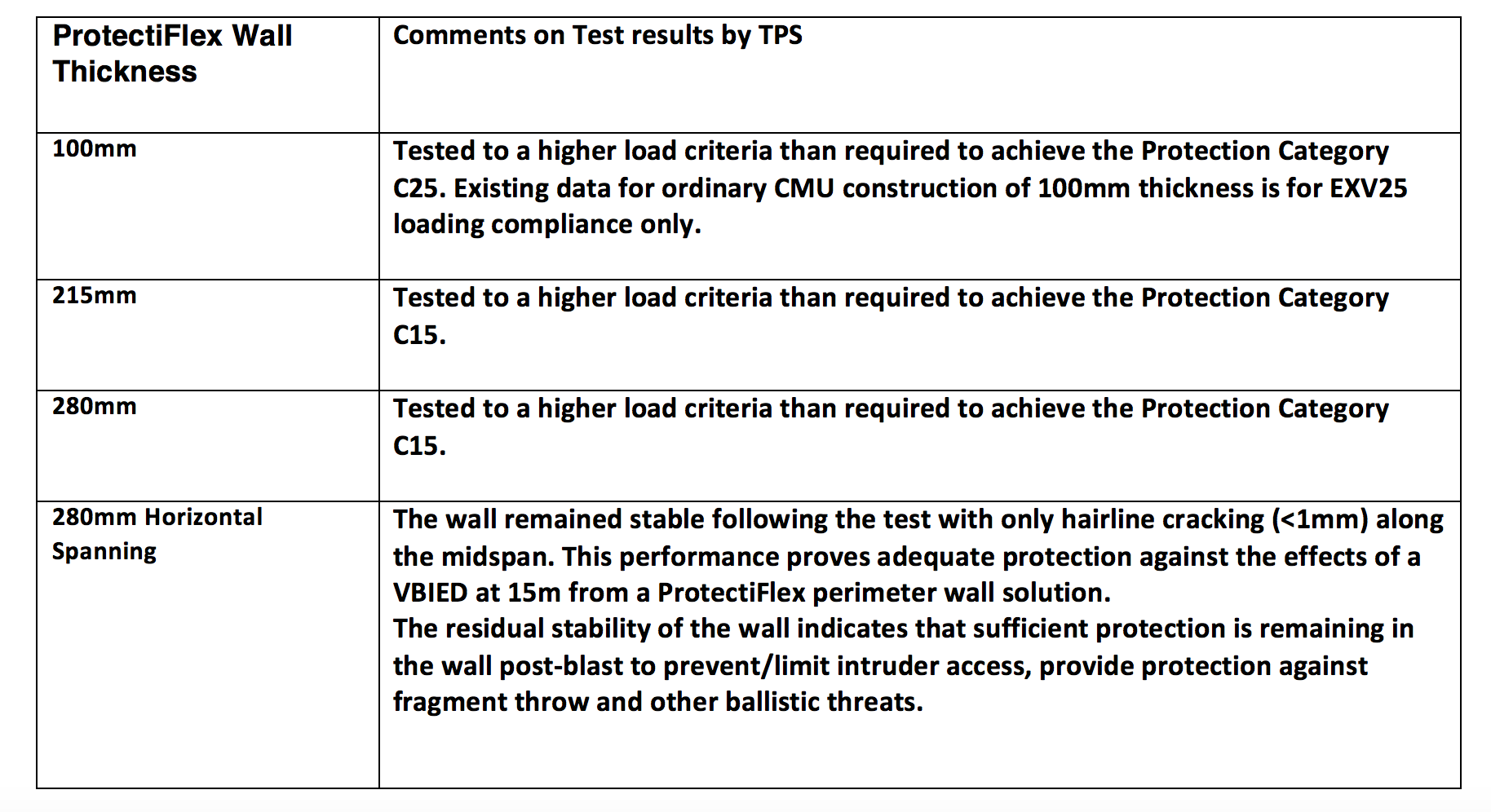Equine air features in Tyre and Rubber Recycling post highlighting its sustainability
ProtectiFlex is given special treatment in November issue of "Inside construction" discussing product evolution and an exciting new collaboration with Lomwest.
Blast Testing of precast ProtectiFlex- An Innovative Single Material Solution Against Extreme Loading
Extensive blast and ballistic tests on precast ProtectiFlex will take place at StoneSmart Solutions' Testing Facility In Oregon USA, during the period of August 16th – August 17th, 2017.
This visit will allow attendees to observe and evaluate live demonstration blast tests, have one-on-one conversations with the StoneSmart team regarding ProtectiFlex’s capabilities and advantages over other mitigation materials, and address any questions and comments they may have.
For more details about the trial and StoneSmart website, please click on the icon below.
ProtectiFlex is working In collaboration with our US partner StoneSmart
StoneSmart Solutions LLC, (StoneSmart), is a niche business, based in New York and Washington, which was established by the primary engineers of Stone Security Engineering. StoneSmart is a research and development company dedicated to developing new and innovative products and services for the protective design community.
Protectiflex is proud to be working closely with StoneSmart in providing a more secure future.
ProtectiFlex appears in Engineers Australia August edition of Create
Engineers Australia has published an article on ProtectiFlex's blast and ballistic capabilities in the August edition of Create.
ProtectiFlex ballistic test Results 2017
ProtectiFlex was tested at David Goode Associates in accordance with the methodology demands of BS EN 1063:2000 and BS EN 1522. The tests demonstrate ProtectiFlex performance against various calibre size and speeds. ProtectiFlex not only stopped penetration of the projectile but also maintained structural integrity. This allows ProtectiFlex to continue to provide protection against further attack and providing structural support to the building.
Second ProtectiFlex Article Features in Engineers Australia.
Gary Bullock MD of Protectiflex parent company receiving a bottle of champagne at a recent Engineers Australia event.
Blast resistant building product developed by Australian engineer
Friday, 5 May 2017
An Australian engineer has developed a unique building product that is both blast and ballistic resistant, which could help to protect buildings from possible terrorist attacks.
The material, which combines concrete with recycled non-biodegradable materials, was first introduced by Gary Bullock around three years ago, and was originally intended for use on sports fields.
But Bullock, a former structural engineer, realised the product absorbed energy, so he decided to see how it performed against the impact of bullets.
“We got the highest level of accreditation from NATO from our blocks. Then I said, ‘Well, why don’t we try it against blasts?’ Bullock said. “We then built a wall and tried to blow it up, and it survived that.”
The product now has four levels of NATO accreditation for the highest level of threat from direct artillery fire and has been tested for both blast and ballistics by organisations such as Det Norske Veritas Germanische Lloyd (DNV GL), the Royal Engineers at COTEC and the Technical Support Working Group, the US government’s research and development program for combating terrorism.
Recent tests have included testing walls with thicknesses from 100 mm to 280 mm with what would be the equivalent of a car bomb as close as 12 metres, as well as testing cannon shells fired at 800m and a rocket detonation at 1.5m.
Bullock said that most products on the market only provide blast or ballistic protection – not both.
“You don’t have to modify your equipment at all, and you can run this through your plant and then clean the plant up with no contamination of follow-on products,” Bullock said.
During the product’s development phase, a considerable amount of testing was required, which meant continually tweaking the concrete mix and testing the product again.
This meant extensive funding was required for the tests, which can be a costly exercise, with around 400,000-500,000 pounds in funding secured from the UK government, as well as funding from a UK building materials company.
“If you’re an individual, there’s no way you can develop these things on your own – it’s just too expensive. The cost of testing to prove it is very prohibitive, unless you can get in with the right sort of people who are prepared to support you,” Bullock said.
As a result of the continual testing and tweaking, ProtectiFlex has undergone considerable changes since it was first developed, such as the need for the material to be strengthened and then retested to prove its qualities.
“For example, in the US where we’ve gone into precast panels, that’s a very different mix to what you would put into masonry,” Bullock said.
“Every time you change from a masonry product to a panel product to a ready-mix product, you have to reexamine the mix and go through all the testing procedures. It’s a pretty major process, and it has changed quite significantly as we’ve developed it.”
Although Bullock said he learnt some important lessons from the testing, he said he would advise others not to carry out in-depth tests in the beginning due to the need and cost to repeat it during the development phase.
“You’re much better off doing broad brush testing up-front, and then as your product changes and develops, use that later on,” he said.
Earthquake resistent
While ProtectiFlex has a range of applications, Bullock said early on the company decided to focus on developing the blast and ballistics side, with the other uses evolving along the way.
Other applications include use for earthquake resistant buildings – testing and a report on the earthquake product, TremorFlex, is currently being carried out by Western Sydney University.
Over the next 12 months, the company plans to go into development in the US with its precast blast and ballistics product, as well as its earthquake product in California and New Zealand.
In Australia, it will look into using its product on thoroughbred horse racing tracks, with a current project being carried out in Victoria.
“It is just a simple product that we’ve put a lot of effort into that we can produce very economically,” Bullock said.
ProtectiFlex Launches in Australia
ProtectiFlex has had a two page article written about its blast and ballistic capabilities in the magazine, Construction Engineering Australia.
ProtectiFlex advert in Construction Engineering Australia.
ProtectiFlex Blast Results
In December 2016 ProtectiFlex underwent Blast trials at RAF Spadeadam. This trial pitted ProtectiFlex against a charge equivalent in size to a car bomb for a range of wall thickness and standoff distances.
The results were impressive. In every case ProtectiFlex exceeded the standard set for masonry concrete for equivalent thicknesses and density. TPS states in summary that"ProtectiFlex is able to compete with heavier blocks whilst providing comparable levels of protection" and Protectiflex walls demonstrated “additional reserves of capacity."
For more information, data and analysis from the the blast trial, please visit our performance gallery by clicking the link below, or feel free to contact Richard Dweck on richarddweck@protectiflex.com



















